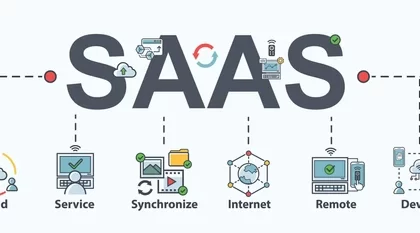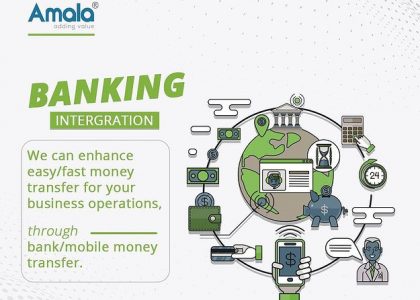In the early 2000s, the microfinance sector was on a roll. It was accessing capital markets for growth, securing regulatory legitimacy, developing savings and insurance products in addition to credit, demonstrating social performance, and working on institutional transformation.
Away from the spotlight, microfinance institutions (MFIs) continues to grow, thrive and serve hundreds of millions of people, using their familiar methods and feeling little need to adjust. But as 2020 approaches, the digital juggernaut has changed the world around them in ways they cannot ignore.
At the recent Microfinance Network’s 25th anniversary meeting, the CEOs of leading MFIs urgently discussed how to respond. Looking at the next 10 years, and reflecting on conversations at the meeting, I offer my own take on seven questions MFIs face.
Are FinTechs going to take over the microfinance market?
In the 1990s, if you wanted to be a social entrepreneur, you founded an MFI. Today, you start a fintech. Accion has become one of the world’s leading investors in “fintech for financial inclusion”, with investments in nearly 50 companies offering such products as payment networks, remittances, small and medium enterprise (SME) credit, consumer credit, PayGo applications, customer advice, insurance, and data analytics. At first, many FinTech’s were out to disrupt traditional financial institutions, like MFIs, but they continue to confront two fundamental problems: customer acquisition and raising capital. This requires many FinTech’s to pivot towards partnering with traditional institutions, and that offers a path to the future for many MFIs: fintech partnerships can help MFIs make the leap from traditional to digital.
However, MFIs need to prepare to work with fintechs. They need IT departments that can connect seamlessly to the technology fintechs bring. They need to develop a culture of experimentation, in contrast to an organizational identity wedded to traditional methods. And they need to recognize that fintechs, with limited financial resources, need to get to market quickly, or they need financial support from prospective partners. To take advantage of what fintechs have to offer, MFIs must not only ask what they need from fintechs, but also be prepared to offer what fintechs need from them.
Can MFIs participate in the innovation happening in SME (small and medium enterprise) credit?
After decades of stagnation, SME credit is alighting with innovation. This innovation is enabled by three economic structure changes that are moving previously informal businesses toward greater formality:
- Electronic invoicing: Across Latin America and other regions, governments are requiring SMEs to invoice electronically, mainly for taxation. Lenders like Konfio in Mexico use the resulting data trail as the basis for digital lending.
- Supply chain finance, led by the large companies that supply goods to local merchants or that purchase agricultural output, is emerging.
- E-commerce, perhaps the biggest force, is connecting millions of SMEs to technology platforms.
Many MFIs have a ready advantage in connecting with these market opportunities as they already serve SME clients and are skilled at underwriting for at least the lower end of this segment. Going forward, they can develop lending methods that use electronic data trails. They can also partner with big distributors, agricultural buyers or e-commerce firms taking advantage of the fact that these platforms do not see lending as core to their business and often welcome partners with lenders.
Will consumers be adequately protected in a digital world?
We have to keep asking this question, as digital financial services bring new risks to consumers. Digital loans can be very easy to get, but also very expensive. In Kenya, where tiny digital loans are available via the phone, we get a good picture of the risks involved: 20 percent of customers in default, many digital loans used for sports betting, prices much higher than microfinance loans, and an enormous number of people added to the credit bureau blacklist.
Data protection is another rising risk: customers want assurance that their private data remains private, both as a fundamental right and because they are concerned about their exposure to hacking, fraud, and mistakes. As MFIs go digital, their exposure to cybersecurity risk rises.
Regulators are struggling to keep up with emerging risks, and MFIs can play an important role in ensuring that they meet high consumer protection standards and shaping high market conduct standards for other players.
Is digital transformation feasible for traditional MFIs?
For MFIs to turn the challenges described here into opportunities, they must be willing to undergo digital transformation. In many cases, such as the MFIs that are members of the Microfinance Network, they are already moving along the digital journey, but few have completed that transformation. Many organizations have created digital tools for their loan officers, some have incorporated credit scoring tools into their underwriting processes, and many have switched to digital loan disbursements and repayments.
More fundamental digital transformation requires rethinking business models, including the role of the cadre of loan officers who constitute the backbone of the staff of most MFIs. This transformation entails difficult choices about retraining and employment, which need to be discussed more openly in the sector. Investments in data analytic capabilities are needed, and at the board level, expertise needs to be brought on to guide the transformation.
Concurring this global position that reflects the microfinance sector development, Tanzania has come up with a regulatory measure and requirement that needs these MFIs to take charge, there has to be a digital basic requirement. If that is the case then, Amala App Suite is the one and recommendable solution for the Microfinance in Tanzania. With Amala App Suite you can manage your loans, shares and savings all at once. Moreover, you will be attended by a professional team of experts that is always ready to give quality services to customers.








